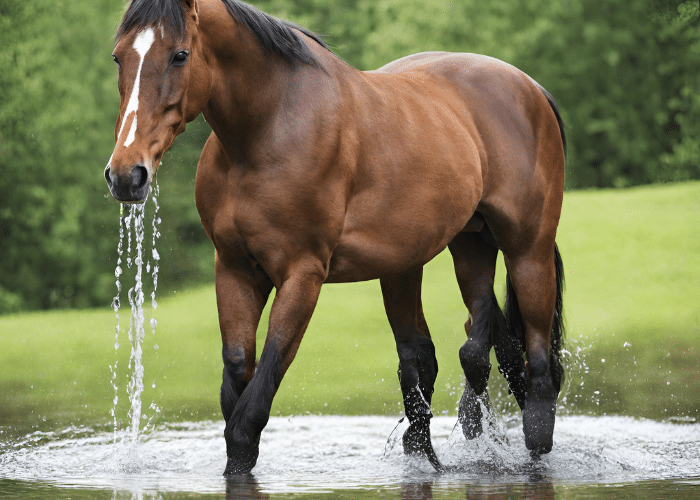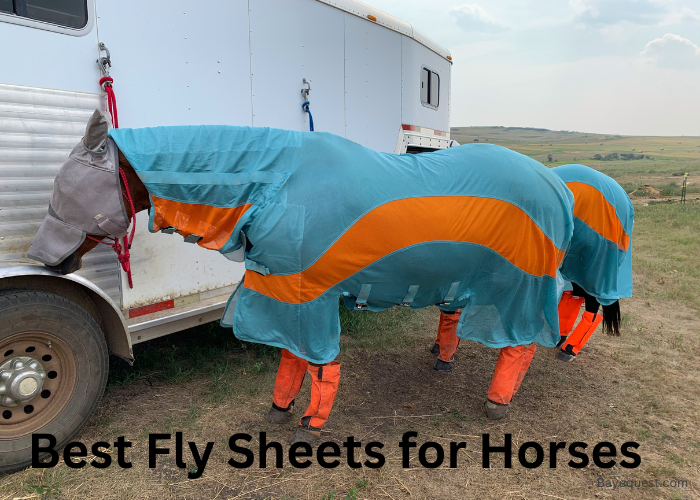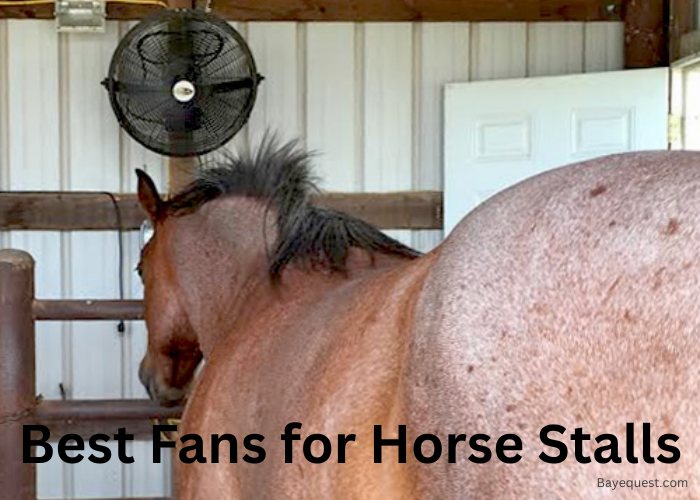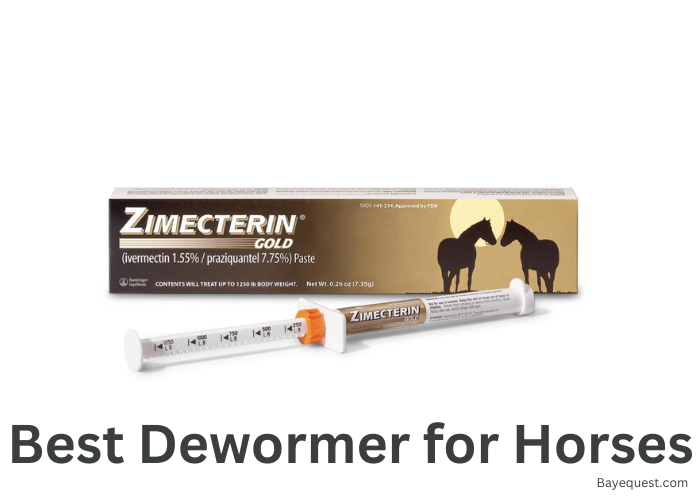Today we’re trotting down the path less traveled to explore the natural remedies for treating ulcers in horses. Picture this: your majestic friend, galloping freely without the shadow of discomfort.
Ulcers can be a real pain in the gut for our equine companions, but what if I told you that relief might just be a graze away?
From the magic of herbs to the power of lifestyle tweaks, we’re diving hoof-first into treatments that don’t just mask symptoms but heal.
So, let’s grab the reins and guide our beloved companions back to health, naturally. Welcome to our journey into treating ulcers in horses, the natural way.
Key Takeaway in Treating Ulcers in Horses Naturally
Treating ulcers in horses naturally involves diet modification, alongside herbal remedies. Incorporating stress-reduction techniques, constant access to water, and minimizing NSAID use also play crucial roles. Combining these with vet-approved treatments promotes healing and prevents ulcers.
An Overview of Equine Ulcers
Equine ulcers are the formation of sores or lesions on the lining of the stomach, esophagus, and sometimes even in the hindgut. These ulcers result from the erosion of the lining due to various factors. These may include excessive acid production, stress, and the use of certain medications.
The presence of ulcers can affect a horse’s health, behavior, performance, and overall quality of life. To fully grasp the scope and impact of equine ulcers, you need to understand the categories into which they are divided.
Categories of equine ulcers
Equine ulcers can be broadly categorized into two main types: Gastric Ulcers and Hindgut Ulcers. Each of these categories has unique causes, symptoms, and treatment approaches.
1. Gastric ulcers
Gastric ulcers occur in the stomach and are the most commonly recognized form of EGUS. The stomach is divided into two distinct areas: the squamous and the glandular regions, each with its own type of lining.
- Squamous ulcers. These ulcers are found in the upper, non-glandular part of the stomach. Squamous ulcers often result from prolonged exposure to stomach acids. They are also associated with factors like stress, diet, and the physical demands of training and competition.
- Glandular ulcers. These occur in the lower, glandular part of the stomach, which secretes acid necessary for digestion. This region has more natural protection against acid, so ulcers here may be related to a breakdown in the stomach’s protective mechanisms, often due to illness, medication, or other stressors.
2. Hindgut ulcers
Hindgut ulcers develop in the posterior part of the digestive system, including the cecum, colon, and sometimes the rectum. These ulcers are less frequently diagnosed than gastric ulcers but can be detrimental to a horse’s health.
Hindgut ulcers can result from:
- The use of NSAIDs (non-steroidal anti-inflammatory drugs).
- Diets high in starch and low in fiber, lead to changes in hindgut pH and microbial flora.
- Stressful conditions affecting gut motility and blood flow to the hindgut.
What Causes Ulcers in Horses?
The development of ulcers in horses is a multifactorial issue. This means, it’s influenced by a combination of factors. These include:
1. Stress
Stress plays a significant role in the development of ulcers in horses. It can stem from various sources, such as:
- Environmental changes. Moving to a new location, changes in stable mates, or alterations in routine can stress horses.
- Training and competition. The physical and psychological demands of training and competition can increase stress levels.
- Confinement. Limited turnout and long hours spent in stalls without social interaction or free movement can cause stress.
- Illness or injury. The stress of coping with illness or recovery from surgery can predispose horses to ulcers.
2. Dietary factors
The horse’s diet is closely linked to the health of its gastrointestinal tract. Factors that can contribute to ulcer development include:
- Low forage diet. Horses are grazers, and their stomachs produce acid continuously. So, they expect a regular intake of forage. A lack of forage increases the risk of acid damage to the stomach lining.
- High grain diets. Feeds high in carbohydrates can ferment quickly in the stomach. These acids therefore damage the stomach lining and increase gastric acidity.
- Irregular feeding schedules. Infrequent and large meals lead to long periods where the stomach is empty, except for gastric acid, which can harm the stomach lining.
Interesting read: Ventral Edema in Horse Belly.
3. Use of NSAIDs
The use of NSAIDs such as phenylbutazone or flunixin meglumine can decrease the production of the stomach’s protective mucus layer. This will make the lining more susceptible to damage by stomach acid.
Long-term or high-dose use of these medications is a well-known risk factor for the development of equine ulcers.
4. Exercise
Intense exercise has been linked to an increased risk of gastric ulcers in two main ways:
- Increased abdominal pressure. Intense exercise can increase abdominal pressure, forcing stomach acids into the upper part of the stomach.
- Blood flow. Exercise diverts blood away from the stomach to the muscles, thus weakening the stomach lining’s defenses against acid.
5. Physiological stress
The body’s physiological responses to stress, including the release of stress hormones like cortisol, can also contribute to ulcer formation.
This increases gastric acid production and reduces blood flow to the gastric lining.
Signs and Symptoms of Ulcers
Recognizing these signs is crucial for timely diagnosis and treatment. The symptoms can vary widely depending on the severity and location of the ulcers.
Here are some common signs and symptoms that may indicate a horse is suffering from ulcers:
Changes in eating habits. Horses with ulcers may show a decreased interest in food, especially grain, or may take longer to finish meals.Some may start and stop eating frequently or seem to be picky with their feed.
Weight loss and poor body condition. Despite adequate feed, horses with ulcers can experience unexplained weight loss. Their coat may appear dull and lack the usual shine, indicating poor health.
Behavioral changes. Horses suffering from ulcers often display changes in behavior, such as increased irritability, aggression, or anxiety. They may also become less tolerant of grooming and saddling, showing discomfort or resentment when their belly is touched.
Colic symptoms. Recurrent mild colic, especially after eating, can be a sign of gastric ulcers. Signs of discomfort, such as lying down more than usual, looking at their flank, or pawing at the ground, might be observed.
Decreased performance. A noticeable decline in performance, especially in athletic horses, can be a symptom of ulcers. They may show reluctance to work, stiffness, or a decrease in stamina and overall energy levels.
Changes in stool. While not as common, changes in stool appearance, such as looser stools, may indicate hindgut ulcers.
Girthiness. Horses with gastric ulcers may become “girthy” or sensitive around their girth area, reacting negatively when being tacked up.
Poor appetite for water. Decreased water intake can sometimes be associated with ulcers, although it’s a less common symptom.
Negative Impact of Ulcers on Horses
Ulcers have a profound negative impact on the well-being and performance of horses. The severity of these impacts often depends on the extent and location of the ulcers, as well as how quickly they are diagnosed and treated.
Here’s a breakdown of the various negative impacts ulcers can have on horses:
- Weight loss and poor body condition
- Gastrointestinal discomfort
- Increased irritability and aggression
- Girthiness
- Decline in athletic ability
- Training and learning difficulties
- Increased susceptibility to infections
- Decreased quality of life
Diagnosing Ulcers in Horses
Diagnosing ulcers in horses involves a thorough evaluation of clinical signs followed by a gastroscopy. Gastroscopy, or equine gastric endoscopy visually inspects the lining of the horse’s stomach.
To standardize the assessment and treatment of equine gastric ulcers, scoring systems have been developed. The scoring system ranges from 0 to 4, with each number representing the severity and extent of the ulceration.
| Grade | Severity |
| Grade 0 | No visible ulcers or lesions; the stomach lining appears intact and healthy. |
| Grade 1 | Mild condition characterized by the presence of superficial lesions. Possibly small areas of reddened mucosa, but no deep ulcers are visible. |
| Grade 2 | Moderate condition with more extensive areas of reddened mucosa. Presence of superficial ulcers, though the ulcers are not yet deep or bleeding. |
| Grade 3 | Severe condition indicated by widespread lesions with deeper ulcers, which may be bleeding. The stomach lining shows significant damage. |
| Grade 4 | Extremely severe condition with extensive deep ulcers, often with areas of bleeding, and considerable damage to the stomach lining. This grade represents the most severe form of gastric ulceration. |
Natural Ulcer Treatment for Horses
Here’s an overview of natural ulcer treatments for horses.
Diet modification
Provide your horses with constant access to forage. This simulates their natural grazing behavior, which not only keeps stomach acid diluted but also stimulates saliva production.
If grains are necessary for meeting energy requirements, select those with a low glycemic index. This can help to minimize acid production.
Incorporating feeds that are designed to be gentle on the equine stomach can also be beneficial.
You can also add certain supplements to support gastrointestinal health. These might include ingredients like magnesium and calcium, which can act as natural buffers for stomach acid.
Herbal remedies
Herbal remedies harness the power of plants to support healing and provide symptomatic relief. Some herbs that can treat equine ulcers include:
Aloe vera. Beyond soothing, aloe vera can support the regeneration of the stomach lining. It’s often recommended to use aloe vera juice or gel that is free from additives and aloin.
Slippery elm. It forms a gel-like substance when mixed with water. This gel coats the stomach’s lining, offering relief from irritation and acidity. This herb is rich in antioxidants, further promoting healing.
Fenugreek. Its mechanism for soothing the stomach involves coating the lining. It may also help to stimulate appetite in horses reluctant to eat due to discomfort.
Ginger. Promotes normal digestion and can help in moving food smoothly through the digestive tract. This reduces the risk of stomach contents splashing and causing irritation.
Mint. Peppermint and spearmint are known for their ability to soothe the digestive system and reduce gas. (Read also: Do Horses Love Peppermints?)
Chamomile. Has anti-inflammatory and spasmolytic properties, helping to calm the digestive system and relieve discomfort.
Lemon balm. Recognized for its calming effects, it can help reduce stress, a contributing factor to ulcers.
Integrative therapies
Integrative therapies offer a complementary approach, focusing on the horse’s overall well-being:
Acupuncture. It can improve digestive function by modulating the nervous system, thereby reducing the production of stomach acid. Acupuncture points for ulcer treatment are selected based on their ability to relieve pain, reduce stress, and promote healing.
Massage and chiropractic care. Regular massage therapy can help alleviate tension throughout the body. This promotes relaxation and potentially improves digestive function. Chiropractic adjustments ensure the spine is properly aligned. This indirectly supports digestive health by ensuring the nervous system’s optimal function.
Read also: What is equinophobia?
Ways to Naturally Prevent Ulcers in Horses
Now, let’s set the stage for your horse’s health one step at a time:
Don’t let the feed bin get lonely. Keep that feed coming in small, regular doses. It’s like a constant party in the stomach, keeping the acid busy and the lining happy.
Water, water everywhere. Make sure your horse can sip water anytime. Think of it as their favorite drink being available round-the-clock.
Ease up on the grains. Too much grain is like a heavy metal concert in the stomach – exciting, but stressful. Let’s turn down the volume with more hay and less grain.
High-quality hay is the way. It’s like the difference between fast food and a home-cooked meal. The better the hay, the happier the stomach.
Check the menu. Look at your horse’s diet as if you’re a nutritionist. Balance those proteins and fats to keep their digestive system singing in harmony.
Supplements can be superheroes. There are special supplements out there, like the sidekicks in superhero movies, ready to support gut health and keep ulcers away.
Avoid the boomerang. When treating ulcers, don’t let them make a comeback. Follow through with care to keep the stomach’s environment stable.
NSAIDs? Use sparingly. These meds can be tough on the tummy. Think of them like a strong spice – a little goes a long way.
Chill out. Stress isn’t just a human thing; horses feel it too. Find ways to keep your horse’s environment as calm and soothing as a day spa.
Don’t overdo the gym. Exercise is great, but too much can strain more than muscles. It’s all about finding that sweet spot.
Travel light. Moving around too much can be stressful. When you can, let your horse stay put and enjoy some downtime.
Free range is the dream. Imagine being cooped up all day; nobody likes that. Give your horse as much freedom and space as you can. It’s like choosing the open road over a cramped car ride.
What to Feed a Horse to Prevent Ulcers
Feeding a horse to prevent ulcers is all about creating a diet that mimics their natural grazing habits as closely as possible. Here’s a guide to crafting a menu that keeps those ulcers at bay:
- Plenty of forage
- Low to moderate grain intake
- Small, frequent meals
- Supplement with fats and oils
- Incorporate specific supplements like buffering agents, prebiotics, probiotics and pectin. Encourage water consumption
- Add in some alfalfa
Read also: How to Treat Equine Strangles.
Conclusion
As we wrap up our journey through the natural landscapes of treating equine ulcers, it’s clear that the path to wellness trots through the fields of mindful care, balanced nutrition, and gentle healing. Embracing nature’s pantry and the wisdom of holistic therapies offers a beacon of hope for our four-legged companions.
Remember, blending natural remedies with veterinary care creates a powerful synergy. So, let’s tread gently, feed wisely, and care deeply.
In closing, let the essence of this guide inspire you to foster an environment where your horse can thrive, free from the discomfort of ulcers. Here’s to the health of our horses, naturally nurtured, lovingly maintained.








